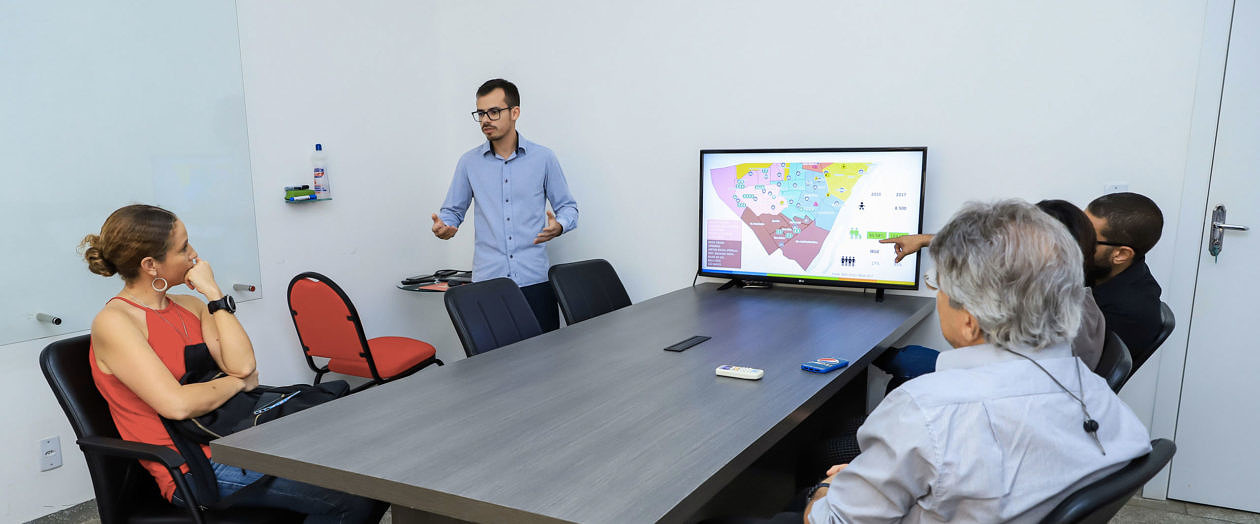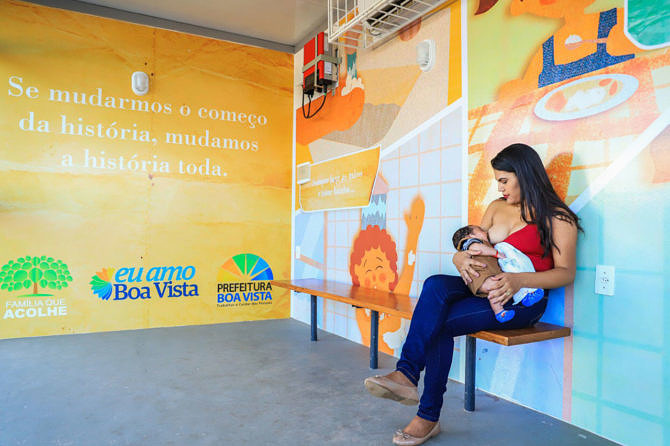Integrated early years data infrastructure
An integrated data infrastructure for better decision-making

Zoom in Details
Creating an integrated infrastructure of early childhood data across departments enables municipalities to better assess needs and prioritise impactful interventions.
- Government Agencies Engaged:
- Education, Health, Parks and Gardens, Social services, Technology, Transportation, Urban Development
- Implementing Agency:
- Municipality of Boa Vista
- Funding Source:
- Bernard van Leer Foundation
- Scale:
- City-wide. The data infrastructure combines data from several city-wide departments.
- Area:
- Urban95
- Implementation action in focus:
- Assess and prioritise
- Location:
- Boa Vista, Brazil
- Reach:
- Municipality of Boa Vista
- Share:
- Print:
Summary of Intervention/Programme
Boa Vista is the capital of the state of Roraima, in northern Brazil. Its mayor announced her ambition to make the city the “capital of early childhood”.
“There is an opportunity to use the data to better plan the municipality strategies from the start. This is a cultural shift that requires a change of mindset.” – Fernanda Vidigal, Programme Coordinator at the Bernard van Leer Foundation
It is situated close to the Venezuelan border and is receiving large amounts of migrants, including families with young children, fleeing their country’s crisis.
Urban95 in Boa Vista integrates elements of mobility (walkability and transit stops), public space interventions (parks and play spaces), but also early childhood services and, most importantly, the development of a comprehensive data infrastructure to centrally monitor early childhood service delivery, coverage and performance. The city also works closely with school students to anchor the thinking around early childhood as a cross-sectoral and cross-generational priority.
The data warehouse for early childhood works by integrating data from existing systems such as health, social service, education and existing early childhood programmes. It centralises the data in a dashboard available to the mayor’s team and tracks progress across 40 indicators, down to the individual citizen and by neighbourhood. This allows the city to compare data across services and identify risks and gaps.

What worked well
Integrating data allows for better services
Consolidating data from various existing systems into one data warehouse allows to identify the families most at risk, increase the efficiency of referrals and even prevent dangerous situations from deteriorating through a system of risk-alert reports. These reports alert frontline workers directly in touch with the at-risk individuals and suggests courses of action and potential referral options.
Data-informed prioritisation
Urban95 in Boa Vista has used the Children Priority Zone methodology of the Urban95 Starter Kit and decided to focus urban space interventions on two districts that have been identified as most in need. This was possible thanks to the municipal team’s effort select 40 indicators from a global list of about 800, and using these indicators to assess needs and monitor Urban95.
The two districts were initially selected based on quantitative data related to socio-economic vulnerability and concentration of pregnant women: they combine the highest concentration of pregnant women enrolled in the social support programme Familia que Acolhe come, and of low-income families. The Urban95 Starter Kit Priority Zone methodology was later used to develop the Children Priority Zones and think through the various mobility and public space interventions.
Most of the 40 Urban95 indicators selected by the mayor’s team are now included in the central data warehouse and dashboard, and are used to locate, prioritise and design public space and mobility interventions.
For example, the city has been able to identify the main routes parents take to walk or cycle with their children and implement some quick-wins interventions such as playful colourful sidewalks. The city also rerouted bus routes towards early childhood services, placed new bus stops where caregivers needed it most, and made them safe places to breastfeed. Traffic has been slowed down and sidewalk upgrades prioritised in a ratio of 100m around the location of early childhood services
Combining Urban95 and Parents+ principles for multiplied impact
The data selected to track urban95 does not only relate to family friendly urban planning and design and healthy environments for children, but mostly to service delivery for city services directly in relation with young children and caregivers. In this way, Urban95 in Boa Vista adopts a comprehensive strategy that reaches families with young children at different moments and in complementing channels.
What didn't work well
Specific monitoring procedures still need to be developed in order to incorporate update the data on a few of the Urban95 indicators.
As changes in behaviour usually take some time, some leaders still plan without first consulting the data and then have to modify their strategies down the line.